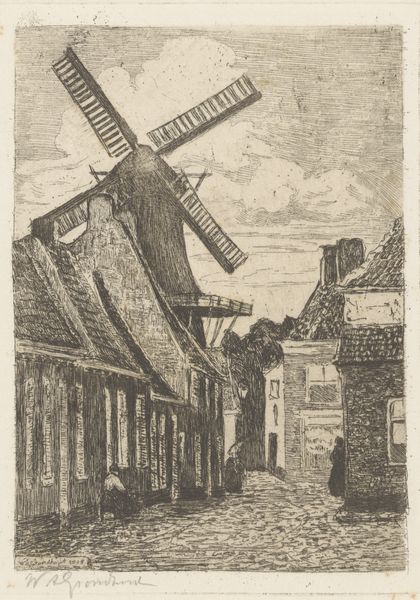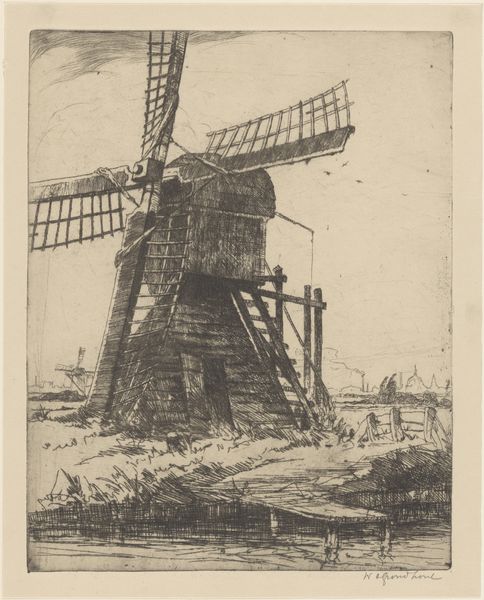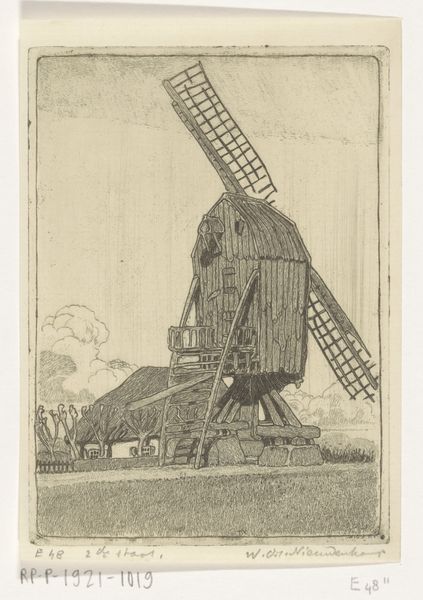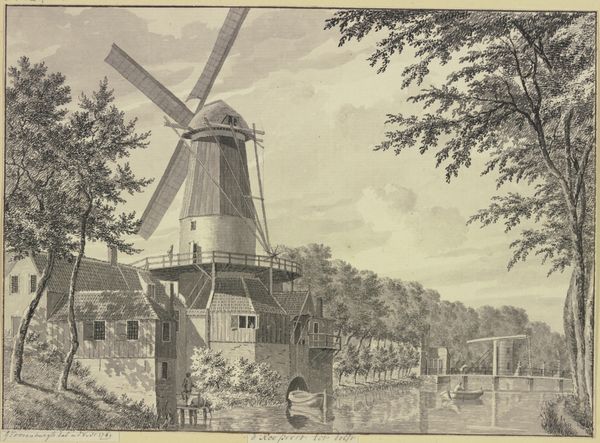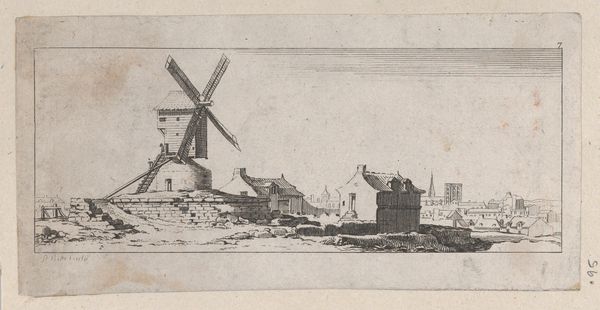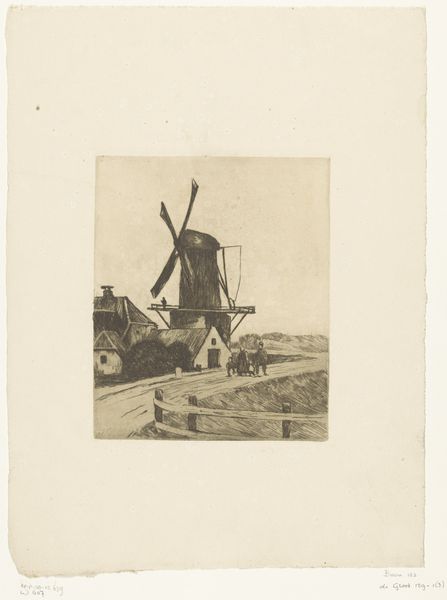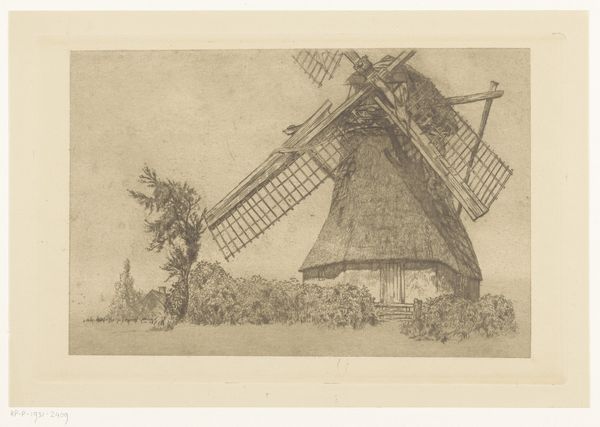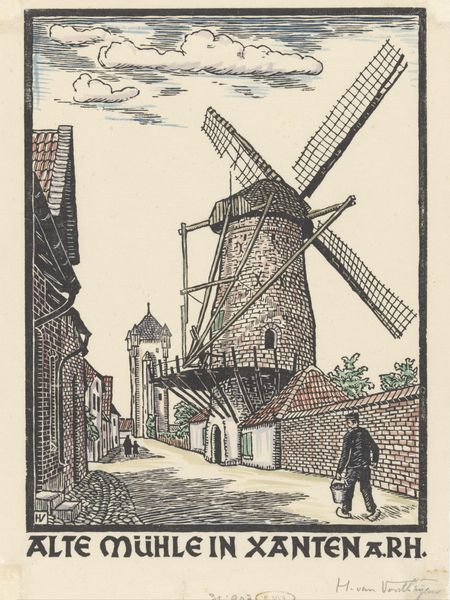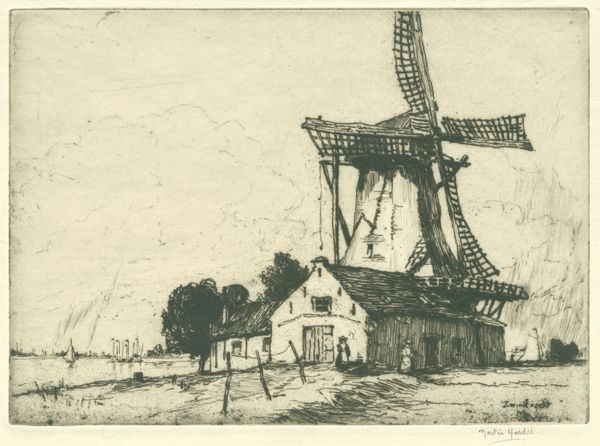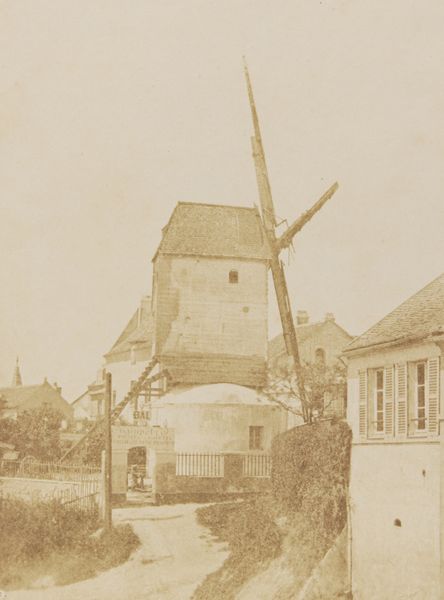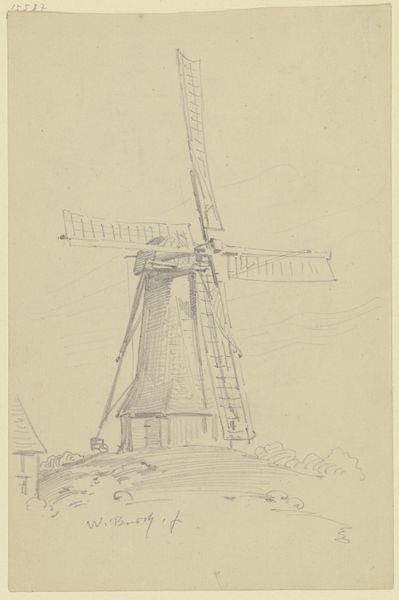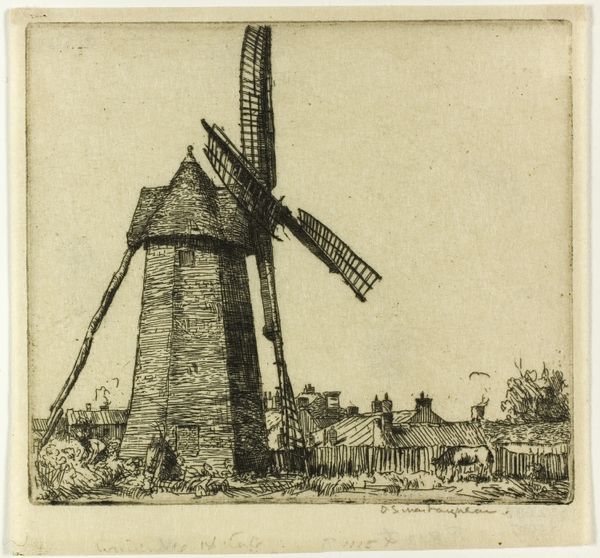
drawing, paper, ink
#
drawing
#
dutch-golden-age
#
paper
#
ink
#
cityscape
#
realism
Dimensions: height 212 mm, width 160 mm
Copyright: Rijks Museum: Open Domain
Curator: Let’s take a closer look at this cityscape titled "De Achterweg, Raampoort te Amsterdam," created sometime between 1870 and 1926 by Willem Wenckebach. It's a drawing in ink on paper. Editor: It has a very melancholic atmosphere, even though it's a fairly ordinary scene. The sharp lines create this sense of somber observation. What do you see here? Curator: I'm drawn to the historical context. Amsterdam at this time was a hub of industry and trade, but also a city wrestling with its identity as modernity encroached upon its traditional ways. This little street, with the windmill looming over it, really tells that story. The drawing captures the contrast between the old and new. Editor: Absolutely. The composition forces your eye to move towards the background—to the heart of that contrast—through the receding planes of buildings and cobblestones. Look at the tonality and density of the drawing marks that give the buildings shape! Curator: It also subtly comments on the urban development of Amsterdam, a tension palpable as older structures gave way to new economic enterprises. That lumberyard wedged behind the windmill isn't merely happenstance. Editor: Speaking of that windmill— it seems slightly off-kilter; perhaps the lines are just ever so subtly off plumb to give that suggestion. Curator: I see your point. And maybe that's Wenckebach hinting at the social upheavals occurring. The Raampoort, once a vital gate, becomes a mere backdrop. Editor: Yes, precisely! He transforms mundane architecture into an emotionally potent visual through tonal gradations, contrasts and careful management of linear perspective, all contained in this modest ink drawing. Curator: Considering Wenckebach's own involvement in social movements, I think it's fair to see this not just as a depiction, but a statement about a city transforming. Editor: A quiet statement, granted, but no less forceful. It invites prolonged viewing and close study of the kind we have given it, so that the composition yields all kinds of nuances regarding technique, space and tone. Curator: Indeed. It reveals how art becomes an arena to negotiate historical change. Editor: It all hinges, doesn’t it, on how those intrinsic forms become powerful tools of observation and expression!
Comments
No comments
Be the first to comment and join the conversation on the ultimate creative platform.
